Companies Risk Losing Customers and Employees as They Move Away From DEI


(Image: Zachary Musser/Unsplash)
Companies including Tractor Supply Co. and John Deere publicly discontinued their diversity, equity and inclusion (DEI) programs this month. But research indicates they may be on the wrong side of public opinion and at risk of alienating customers and employees.
Despite the persistent drumbeat of conservative attacks on “woke capitalism,” around 6 in 10 U.S. adults say DEI programs are “a good thing,” according to a Washington Post–Ipsos poll released earlier this summer. “Support was even higher for specific programs such as internships for underrepresented groups and anti-bias trainings,” Taylor Telford, Emmanuel Felton and Emily Guskin wrote for the Post.
Meanwhile, the business case for DEI is clear. Deloitte’s 2024 Gen Z and Millennial Report is among the recent research connecting corporate social and DEI policies with hiring and retention. “Reasons for rejecting an employer or an assignment include factors such as having a negative environmental impact or contributing to inequality through non-inclusive practices,” the report reads.
DEI on the ropes
Favorable public opinion aside, some business leaders are pulling back on their DEI commitments in response to rhetoric. In a recent opinion piece for Inc., human resources consultant Suzanne Lucas cited partisan politics at work while noting Zoom, Snap, Meta, Tesla, Home Depot and Wayfair among the leading firms to hit their DEI staff disproportionally during recent layoffs.“This is even though most Americans support DEI,” she wrote.
Among those taking credit for Tractor Supply’s about-face on DEI is the social media influencer Robby Starbuck. The conservative activist also deployed his X (formerly Twitter) account to target John Deere and Harley-Davidson for boycott, referencing Bud Light in a threatening message posted over the weekend.
“Hey @harleydavidson @JohnDeere are you two looking at this?” Starbuck wrote, drawing attention to a chart showing a sharp decline in Bud Light sales following the launch of last year’s boycott. “This is your future if you don’t make full turnarounds on wokeness. Going woke will absolutely destroy your companies.”
The post followed a more elaborate message on July 23, in which Starbuck posted a nine-minute video to his 521,000 followers on X, pressuring Harley-Davidson to drop its DEI policies.
The inclusion solution
Harley-Davidson has yet to respond publicly, but at least one of the company’s authorized dealers has thrown attention back on Starbuck and his own money trail.
“His baseless accusations against Harley-Davidson are part of a broader pattern of sensationalism aimed at monetizing outrage,” the Vermont dealer Wilkins Harley-Davidson posted to its website in a lengthy public response to Starbuck on Friday. “HD is inclusive. Isn’t that what we want of all employers these days?”
With that statement, Wilkins Harley-Davidson reflects a broader trend emerging in response to anti-DEI rhetoric centered on the common-sense assumption that inclusion is a popular concept for most Americans.
“The fundamental factors that have made diversity a strategic priority for corporate leaders remain unchanged,” Villanova University business professor Corinne Post wrote on Forbes this week.
And she brought the demographic receipt, noting a widening talent gap as workforce participation declines in the U.S. Among other factors, white male workers are aging out while younger women and minorities are achieving the higher education qualifications needed to fill high-skill jobs.
“Finding ways to integrate a wider variety of workers into the workforce is a common-sense strategy for addressing talent shortages,” Post wrote.
Observations like these will be put to the test by voters this year. As the 2024 presidential campaign heats up, the presumptive Democratic nominee is Vice President Kamala Harris — who, despite her long list of qualifications for the role, has been referred to as a “DEI hire” and a ding dong by Republican lawmakers.
From Auto Assembly Plants to National Parks, Zero-Landfill Practices Help to Create a More Sustainable Future
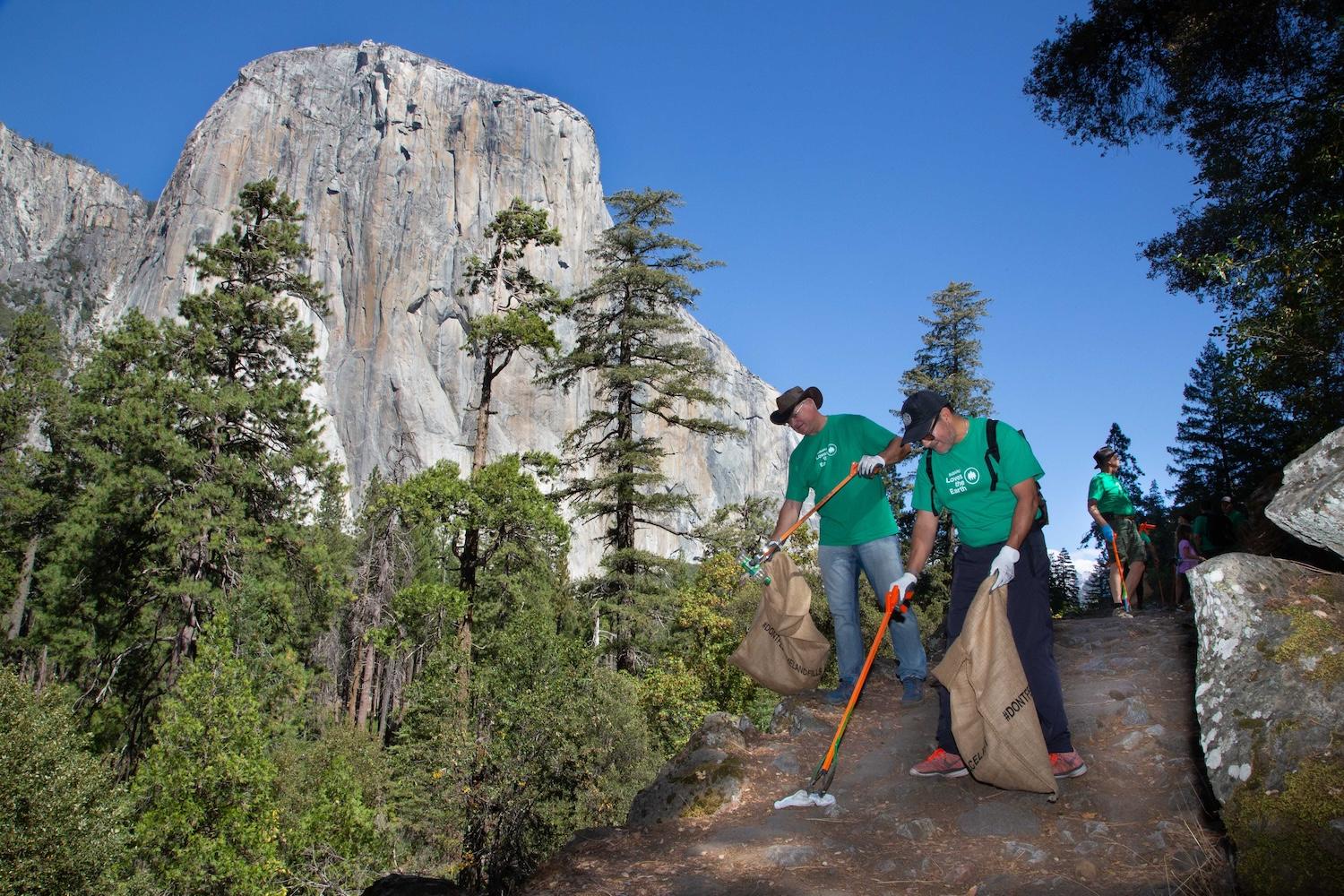
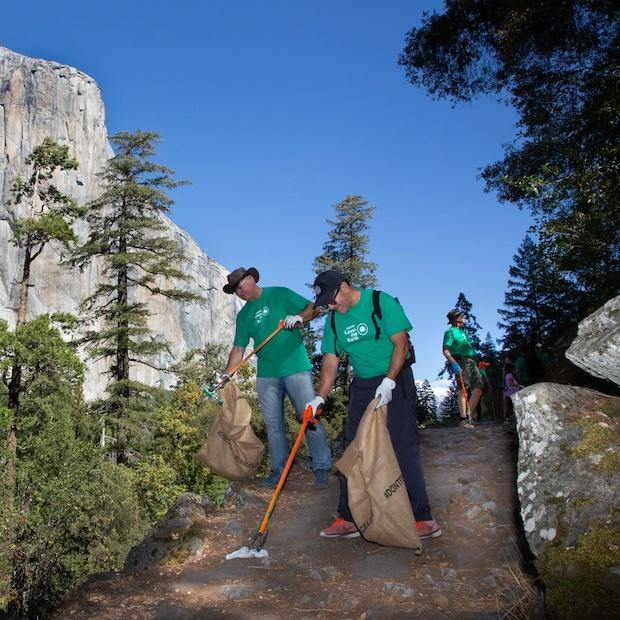
(Image courtesy of Subaru of America)
National parks are an integral part of our country’s landscape. They preserve valuable habitats and provide sanctuary for endangered and threatened species. They also offer endless recreational and educational opportunities for hundreds of millions of visitors each year. On the flip side, the abundance of people in the parks means a lot of waste bound for landfills, with visitors creating almost 70 million pounds of trash in 2022. But the Zero Landfill Initiative, a nearly 10-year collaboration between Subaru of America, the National Park Service, the National Parks Conservation Association, the National Park Foundation and other park stakeholders, proves that doesn’t need to be the case.
“Our customers absolutely love the national parks,” Denise Coogan, environmental partnership manager for Subaru of America, told TriplePundit. “They put their faith in our product, and it’s such an honor when somebody does that, so we thank them by helping to conserve these places they love and the places they like to take their Subaru.”
Lessons from zero-landfill auto plants inform success at national parks
The Zero Landfill Initiative, also known as Don’t Feed the Landfills, aims first to reduce the amount of waste entering parks — followed by reusing, recycling and composting what is brought in. The initiative is built on the lessons learned by Subaru’s own zero-landfill program, which is implemented in all of the automaker’s manufacturing plants globally. Instead of utilizing a top-down approach where executives who aren’t as unfamiliar with the day-to-day processes dictate sustainability measures, Subaru went straight to employees for ideas on eliminating waste.
For example, employee input played an integral role in the sustainability transition at Subaru of Indiana Automotive, a 5.5 million square foot auto assembly plant where thousands of cars are produced each year. “We got all of the 4,700 associates who worked there at the time together to say, 'This is where we want to go, and how can we get there?’” Coogan said. The plant achieved zero-landfill status 20 years ago, making it the first auto manufacturing facility in the U.S. to do so.
Coogan credited the thousands of ideas supplied by production employees for the achievement, calling them the stars of the program. The plant once generated 459 pounds of waste for each vehicle that left the line. By the time the last load was sent to a landfill on May 4, 2004, plant employees reduced the total to 210 pounds — all of which is recycled and reused or, in the case of restroom waste that can’t be recycled, is converted into energy.
“It was an amazing thing to witness, to see everyone taking so much pride in their ideas,” she said. “I had worked in production for many years when I was much younger. And I know how humbling it can be to go in on Jan. 1, knowing what you're going to be doing on Dec. 31, and nothing's going to change. We were able to go to our associates at [Subaru of Indiana Automotive] and say, 'What are your ideas? Can you give us what you think would work the best?’ and then come together and work together to bring their ideas to life. That’s what we did at the national parks, too.”
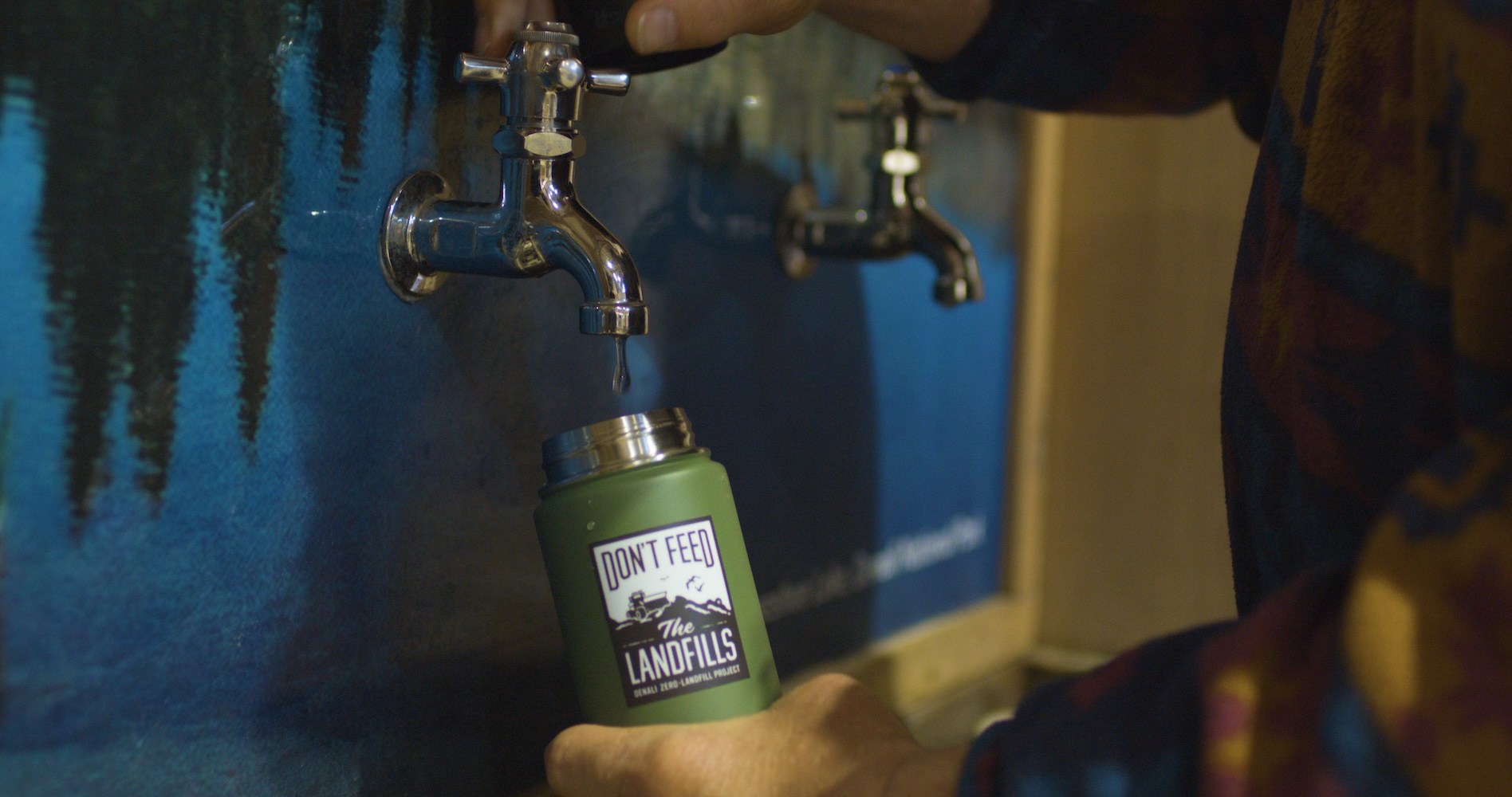
A movement to change environmental behavior in U.S. national parks
The Don’t Feed the Landfills Initiative began nearly a decade ago with three pilot parks: Denali, Grand Teton and Yosemite. Using lessons learned at the pilot parks, Subaru and the National Parks Conservation Association set out to develop a roadmap for more national parks to implement successful sustainable practices. The initiative has since expanded to Big Bend, Zion and a handful of other national parks across the United States, Coogan said.
“The successes and long-term impact of the waste reduction initiative can be attributed to the collaborative community-based approach,” said Karen Hevel-Mingo, director of sustainability for the National Parks Conservation Association. “With Subaru’s shared expertise, and through the challenging work that began at Denali, Yosemite and Grand Teton, we learned quickly that the communities surrounding our parks were as important as the parks themselves. Our many partners were so important in not only helping us reduce waste, but in educating millions of park visitors about how they can help and do their part.”
In spearheading the initiative, Subaru sought to take the same all-inclusive approach it used in its plants and expanded it to national parks and their gateway communities. “These parks are behemoths in these areas. But usually, the population around the parks is not very big — meaning everyone relies on that park, so everyone has a piece of the puzzle,” Coogan explained. “Getting everyone in the same room and saying, ‘Here's where we want to go, what do you need?,’ it opens up a kind of synergistic communication and team building. What gets recycled, how it gets recycled, where it gets put, how it gets picked up — all of that stuff is just details that can be worked out relatively easily. But getting everyone to buy in and creating a movement where you change environmental behavior? That's a little harder.”
A lot of that work boils down to educating visitors with messaging in the park and online that encourages them to reduce what they use and bring into the parks. Tourists are encouraged to bring refillable water bottles, which can be filled at stations in the parks, along with reusable coffee mugs. They’re directed to downloadable brochures instead of paper ones and asked to bring their own totes for any souvenirs they might purchase. And with 40 percent of park waste comprised of food, visitors can be mindful of food waste and utilizing reusable containers that will be packed out.
“We’re really trying to get that message out to people. Don't just reduce waste, think about what you're doing. Think about the impact on the national park. You might just be one family, but when there are 337 million people that go to the national parks every year and everyone uses a plastic water bottle or everyone brings plastic bags and throws them in the trash, it adds up,” Coogan said. “But once you remind them, 99.999 percent of the people really want to do the right thing.”
Sharing the Love is business as usual for Subaru
Subaru’s support of the National Park Service and its role in spearheading the Zero Landfill/Don’t Feed the Landfills Initiative is another example of how it Shares the Love by giving back. Not only is the automaker the largest corporate donor to the National Park Foundation, thanks in part to its annual Subaru Share the Love Event charity campaign, but it’s also helping the parks reach their sustainability goals through innovation grants. These grants allow individual parks to improve infrastructure by purchasing equipment like balers and forklifts that make recycling more feasible, as well as hiring staff to handle marketing, education, and community outreach.
Between the Share the Love Event and Subaru Loves the Earth month that we do every April, we’re getting the word out to our retailers too so that they can be more than a car dealer,” Coogan said. “We really do want to be more than a car company. And this is just one way we show it.”
A scalable approach
Twenty-two million pounds of visitor waste from national parks have been diverted away from landfills through source reduction, composting, and recycling since the initiative’s inception in 2015, Coogan said. Overall, participating parks are seeing a steady decrease in the amount of waste generated per visitor — a clear sign they’re meeting their objectives, she said.
“The lesson that transcends both the national parks and Subaru plants has been involving everyone in the project and that sense of community,” Coogan added. “I honestly believe that people want to be part of something bigger than themselves. And if you allow them the honor and you give them the tools they need to do it, they will rise to the occasion.”
It’s an approach that could be applied to sustainability in just about any industry. And it saves money too — both by using fewer materials and generating less waste in need of disposal. Subaru has saved $1.5 million at its Indiana automotive plant alone, Coogan said. And she’s confident that by giving associates and community stakeholders the voice they need to make real change, this method of waste reduction can be scaled anywhere, to any size.
“The work we’ve accomplished together will live on in our parks, and all who visit them will have cleaner, healthier experiences because of it,” added NPCA’s Karen Hevel-Mingo.
Let’s Talk About Failure


(Image: Tara Winstead/Pexels)
This story about the benefits of discussing failure is part of The Solutions Effect, a monthly newsletter covering the best of solutions journalism in the sustainability and social impact space. If you aren't already getting this newsletter, you can sign up here.
The word “failure” often provokes uncomfortable feelings. It’s a tempting topic to avoid as information overload and news avoidance linger around all-time highs worldwide. But talking about failure, and what can be learned from it, might be just what audiences are looking for right now.
Take business, for example. A global crackdown on greenwashing and fear of the public’s reaction to potential failures has some companies keeping quiet about their sustainability efforts when, in reality, most consumers won’t hold it against them.
In new research from TriplePundit, our parent company 3BL and the research technology firm Glow, we asked consumers in the United States how they’d feel if a company launched a social or environmental program, scrapped it because it wasn’t effective, and then publicly talked about the failure and what they learned.
Nearly half of respondents (44 percent) said they'd think better of the company for being transparent, and 19 percent said they wouldn't feel strongly either way because they know every effort can’t be successful. Just 14 percent said they’d think less of the company.
The key phrase there is “what they learned.” Analyzing a failure and using it as an opportunity to discuss how a problem can be addressed more effectively provides hope in a media landscape that doesn’t deliver enough of it, while still having tough conversations.
The three most important needs cited by 95,000 news readers in 47 countries are staying up to date, learning more and gaining varied perspectives, according to this year’s Digital News Report from the Reuters Institute. Most of them think the media is already doing a good job of keeping them updated on what’s going on. But the media is not meeting readers’ desire for news featuring different perspectives with more context and news offering more hope and optimism.
They’re also looking for more information on often complex topics like education, environmental issues, mental health and social justice.
“It is clear news consumers would prefer to dial down the constant updating of news, while dialing up context and wider perspectives that help people better understand the world around them,” writes Nic Newman, the report’s author. “Most people don’t want the news to be made more entertaining, but they do want more stories that provide more personal utility, help them connect with others, and give people a sense of hope.”
Stories about failure that focus on the lessons learned can meet these needs. They feature a unique perspective on problems in the often difficult-to-discuss topics people want to hear more about, all while offering hope for future progress toward a solution.
The Solutions Journalism Network uses the terms “reporting instructively on a failure” or “learning from failure” to describe stories that meet its solutions journalism criteria while reporting on a failed response.
In a story for TriplePundit, for example, Andrew Kaminsky details one of the reasons governments are failing to enact adequate environmental and social policies: the threat of a lawsuit from foreign companies in a process called an investor-state dispute settlement. The story details how a mechanism designed to resolve legal disputes and mobilize private investment is now undermining human rights and environmental laws. Then, it looks at how some countries are choosing to back out of these settlements as a way to solve the problem and experts’ opinions on how to do things differently.
This piece by Joseph Winters, a staff writer for Grist, explains the struggles food and drink businesses face when trying to adopt reusable packaging. Implementing a reuse system at a single location is expensive and a burden for customers who have to return to drop off the cups and containers they use. As a result, many attempts meet a quick end. Instead of stopping there, Winters delves into what a better, standardized system could look like, the nonprofit trying to make it happen and whether it’s actually possible.
The Solutions Journalism Network recommends a story like this compares the failure to a similar project that is more successful, takes a granular look at where it failed to meet expectations but succeeded in another way, or discusses why people might be drawn to an idea that just isn’t working.
We’ve all heard the famous saying, “Those who don't know history are doomed to repeat it.” By learning from efforts that aren’t successful, rather than sweeping them under the rug, we can improve from our collective failures and avoid wasting precious time and resources making the same mistakes. And that’s a compelling value-add for news readers and writers alike.
Black Women Still Face a Glass Cliff, But Fixing Workplace Systems Can Change That


(Image: simplehappyart/Adobe Stock)
This sharp look at the glass cliff is part of Let's Talk About It, a guest-contributed column exploring how to navigate hard conversations and complex challenges in the workplace. If you're interested in contributing your perspective to this column, please get in touch with us here.
After the murder of George Floyd in 2020 led to calls for racial equity at work, organizations eager to demonstrate their commitment to diversity, equity and inclusion hired more Black women into leadership positions. After decades of facing barriers to advancement and leadership — a concrete ceiling — it seemed like Black women were finally making progress. But many of them were set up to fail and placed in unstable positions in organizations that were floundering. These experiences are characteristic of the glass cliff, a phenomenon where women and people of color are more likely to be appointed to leadership positions during periods of organizational crisis compared to those of stability and growth.
Leading an organization through a time of crisis is a difficult job for any leader, but Black women face additional burdens navigating (in)visibility, the pressure to perform and intersectional stereotypes,
Black women in leadership roles contend with both hypervisibility and invisibility. As studies show, they are penalized more harshly for failures, and their performance is scrutinized more than others. This is especially true when Black women are the first of their race and/or gender to be in a leadership role. There is an increased pressure to perform because of how it could reflect on other people like them. At the same time, Black women leaders deal with invisibility and must work harder to be seen and taken seriously as a leader because they do not match the prototype of the white male leader. This can make it more difficult for them to gain respect, buy-in, and support from their peers and subordinates.
Additionally, because of racial and gender stereotypes such as the “strong Black woman” and phrases like “Black girl magic,” two tropes that portray Black women as uncharacteristically strong and resilient, they may be expected to take on impossible tasks without the support and resources they need to succeed. Given the additional barriers that Black women leaders face, many work twice as hard to be successful, sacrificing their mental health and experiencing increased stress and burnout.
What causes the glass cliff?
The causes of the glass cliff are complex and varied, but these are two reasons that stand out: status quo bias and stereotypes about gender and leadership.
Status quo bias. When an organization is in crisis, leaders want to signal a change from the status quo and use the appointment of a “new kind” of leader (e.g. a non-white man) as a symbolic demonstration of that change. In support of this theory, researchers conducted an experiment and found that the glass cliff effect only surfaced when a company was described as historically male-led. When the company was described as historically led by women, the glass cliff disappeared.
Stereotypes about gender and leadership. It’s been well documented that people tend to associate stereotypically masculine traits, such as assertiveness and independence, with leadership more so than stereotypically feminine traits like cooperation and caring — a phenomenon called “think manager-think male." Interestingly, research also shows a “think crisis-think female” phenomenon where leaders with stereotypically feminine traits are seen as more suitable to lead an organization in crisis. This sets women up to be appointed to glass cliff positions.
How can organizations prevent the glass cliff?
Organizations can mitigate the glass cliff phenomenon and give Black women and employees from other marginalized groups a fair chance to succeed in leadership positions. They must be willing to do three things: make a long-term commitment to diversity, equity and inclusion through succession planning, address barriers and biases in hiring, development and promotion, and create accountability structures within the organization.
Develop inclusive succession planning. Future-thinking companies create a strategy to identify and develop high-potential talent to take on leadership positions when they become vacant. Organizations that do not have a succession plan are most at risk for perpetuating the glass cliff because they must make a quick decision to fill a role with little planning and preparation — a perfect recipe for bias.
Even when companies have succession plans, failure to incorporate diversity, equity and inclusion into the process can perpetuate barriers and inequality that keep women and people of color from advancing into leadership positions. An inclusive succession plan recognizes the need for a diverse and dynamic workforce and actively works to identify and develop high-potential talent from marginalized groups. It seeks to remove barriers to advancement and provide support through leadership development programs and access to sponsors and mentors.
Ultimately, this planning builds an intentionally diverse pipeline of talent to choose from when a leadership position becomes available, helping organizations avoid subjecting Black women to the glass cliff, make consistent progress toward their diversity, equity and inclusion goals, and create smoother transitions between leadership.
Root out bias from hiring, performance appraisals and promotion processes. Evaluation processes such as hiring, performance appraisals and promotion are susceptible to bias that can disadvantage people from marginalized backgrounds. So, it is important to create clear guidelines for how to evaluate others. The more subjectivity there is in the evaluation process, the greater chance there is of bias, so it’s key to base decisions on objective, measurable and job-relevant competencies and criteria.
For hiring, evaluators can use structured interviewing, a human resources tool where candidates are all asked the same competency-based questions and then rated using a rubric to assess their performance on each competency. Bias can also be present during the performance appraisal process. Studies show differences in the amount and quality of performance feedback that employees from marginalized groups receive. Black women in particular receive the least amount of quality feedback compared to other groups.
Equip managers with the skills they need to be objective by hosting training on how to evaluate performance and give high-quality feedback that is clear, actionable and focused on behaviors instead of personality traits. Creating bias-free evaluation processes can help organizations mitigate the glass cliff by shutting down stereotypes and bias.
Measure and track progress. As the saying goes, what gets measured gets managed. Collecting data and tracking progress is also a great way to create accountability and transparency for diversity, equity and inclusion goals, both of which are essential for success.
It’s important to assess the disparity between demographic groups across all facets of the employee life cycle so you can evaluate what is working and what is not. For example, in analyzing performance appraisal and promotion data, it is important to consider whether rates of promotion are similar across demographic groups and whether the quality and amount of feedback is similar. Take it a step further and take an intersectional approach to the data, considering whether there may be disparities across more than one axis of identity. Measuring and tracking progress can help to proactively identify challenges that could lead to a glass cliff scenario.
The bottom line
Restricting Black women’s advancement opportunities to times of poor organizational performance is not a sustainable business or diversity, equity and inclusion strategy. Organizations play a crucial role in ensuring that Black women have access to the same opportunities for development, advancement and leadership as white men. The glass cliff is not inevitable. We can make it an outdated notion.
Lithium-ion Batteries Could Soon Work Much Better in Extreme Temperatures

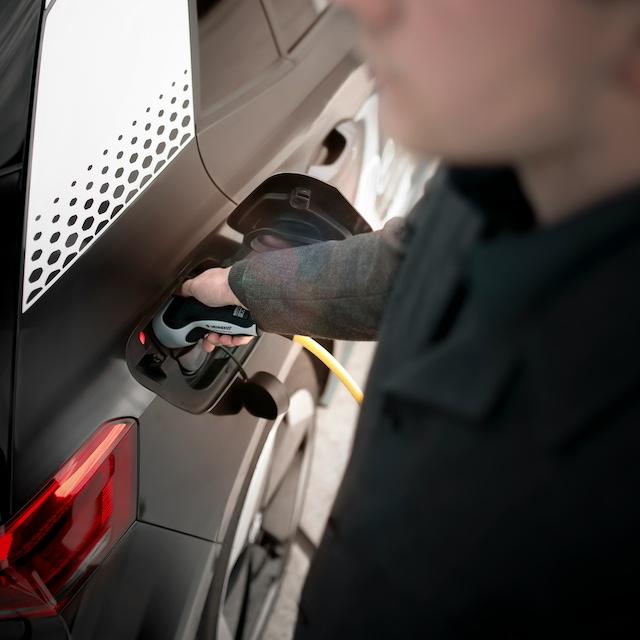
(Image: Maxim Hopman/Unsplash)
Despite huge gains in electric vehicle (EV) battery performance, where 300-plus miles of driving range is becoming the norm, some limitations with batteries still impact the user experience. EVs perform best in temperate conditions, which means drivers may suffer a performance penalty if they operate their vehicles in extreme heat or cold.
In extremely cold temperatures, the range tends to diminish. It can be reduced by around 12 percent at 20 degrees Fahrenheit, according to a 2019 report by the American Automobile Association. And recharging in freezing conditions takes longer, too. At the other extreme, repeated operation of EVs at very high temperatures can accelerate battery aging and lead to a diminished life for vehicle batteries.
Japanese technology company, Asahi Kasei, claims to have found a solution to these temperature-related problems with a breakthrough high ionic conductive electrolyte for lithium-ion battery cells. Triple Pundit recently spoke with Mike Franchy, director of North American mobility, sales and marketing at Asahi Kasei, who explained the company’s innovation in detail.
How the new electrolyte works
The movement of lithium ions from one side of the battery to the other is what creates a charge, and the electrolyte is a solid or fluid chemical that allows them to move.
“Ionic conductivity is the measure of a material’s ability to conduct electric current using the movement of lithium ions through the electrolyte,” Franchy said. “Our product allows the ions to move faster and more efficiently, thereby improving the performance of the battery.”
In a proof-of-concept test with a battery cell manufacturer, Asahi Kasei’s new electrolyte achieved high power performance at -40 degrees Fahrenheit, according to the company. Toward the other extreme, at 140 degrees Fahrenheit, the life of the battery doubled compared to typical batteries.
As well as these findings, Franchy suggested another significant benefit. “The time it takes to charge [a battery] from 10 to 80 percent [of its full charge] can be reduced up to 50 percent, depending on the exact cell design,” he said.
The key to these marked performance improvements comes down to a particular electrolyte ingredient: the chemical compound acetonitrile. It offers a superior ability to store electrical energy coupled with low viscosity, meaning it flows easily with little friction.
Asahi Kasei started experimenting with acetonitrile in 2010. Until now, it didn’t work well with graphite, an important battery material that causes acetonitrile to decompose. The company’s breakthrough is a unique formulation that prevents that from happening.
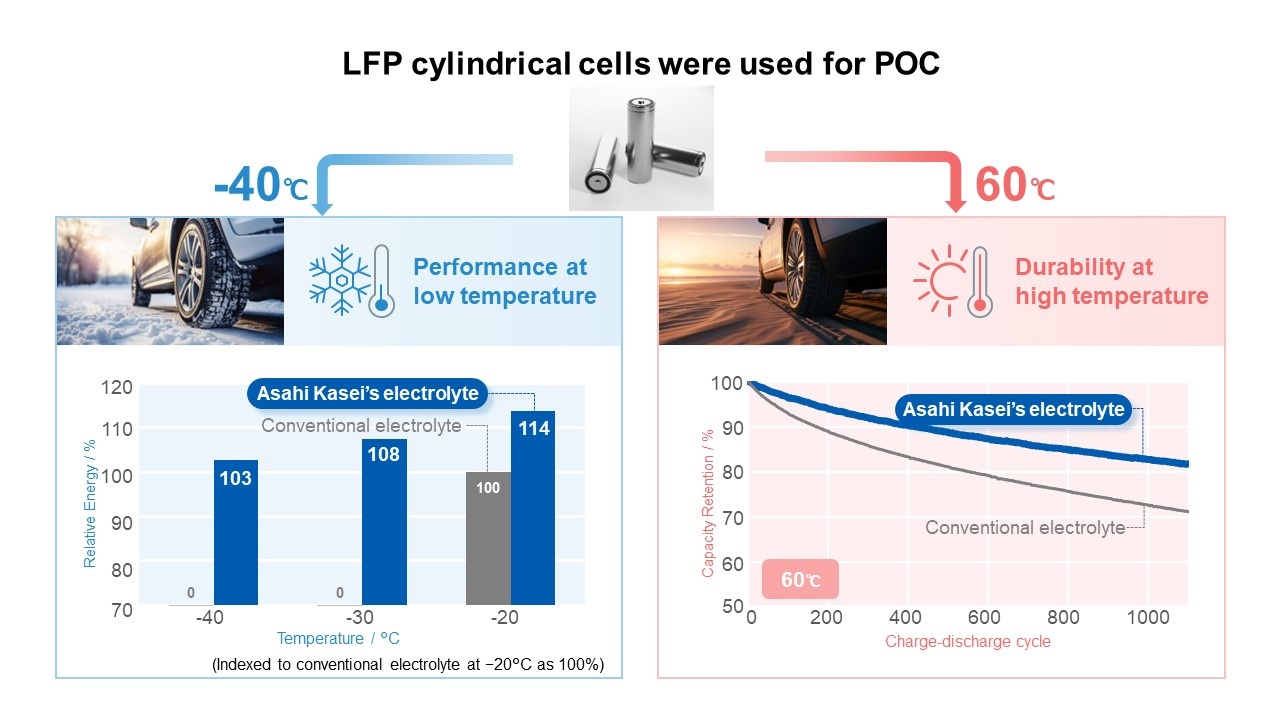
Keeping up with the ever-evolving battery industry
The development of this new electrolyte coincides with ever-evolving lithium-ion battery designs. The proof-of-concept of Asahi Kasei’s electrolyte was done in collaboration with a battery maker using cylindrical lithium-iron phosphate batteries (LFPs), Franchy said. This variant of lithium-ion batteries, named after the materials used to make it, is becoming increasingly attractive for vehicles because it is cheaper. LFPs avoid nickel, manganese and cobalt, which are all expensive elements used in the most common type of lithium-ion battery.
Asahi Kasei’s electrolyte will be suitable for both battery types, but “[Manufacturers] such as Tesla and Ford are using LFP batteries to reduce the cost of vehicles,” Franchy said. “So developing a product that can contribute to increased range and faster charging will benefit both [manufacturers] and consumers.”
LFP batteries are increasingly important in the energy storage sector, too, which means improving the performance and long-term durability of these batteries will also be a benefit in storing renewable energy.
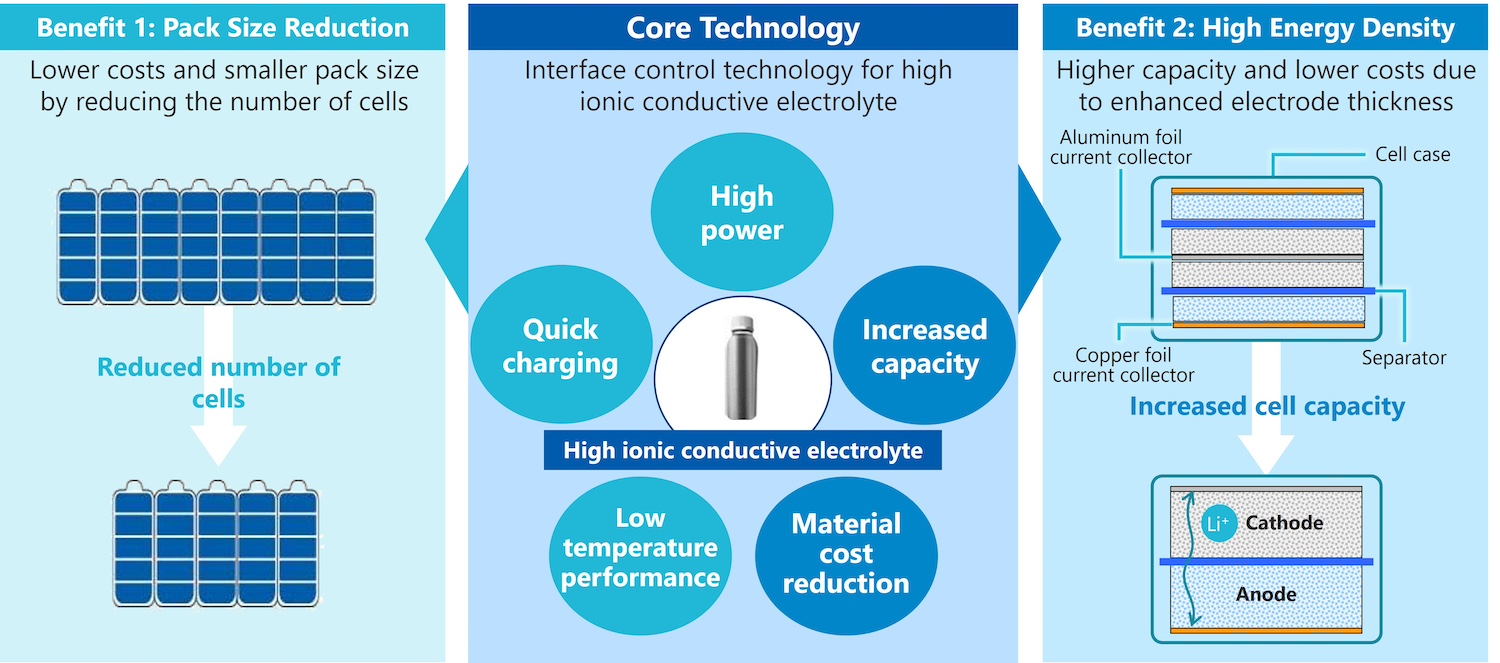
Asahi Kasei expects commercialization of its electrolyte to begin in 2025. The manufacturing process isn't different than current state-of-the-art liquid electrolytes, so licensees will have a low implementation hurdle, Franchy said.
Nonetheless, using the company’s electrolyte is not quite at the plug-and-play stage. Optimizing the new electrolyte for the batteries that are most commonly used in higher-performance and longer-range vehicles is still at the research and development stage, Franchy said.
And the electrolyte probably doesn’t make sense to use in all lithium-ion batteries. Franchy explained that conventional electrolytes are better for consumer electronics devices since they don’t require high power demand or have to withstand operation under extreme temperatures. Consumer electronics manufacturers would likely choose to avoid the inevitable costs of changing electrolytes.
But by targeting increasingly important LFP batteries and testing the electrolyte to commercial standards, the company believes there is great potential to increase demand for lithium-ion batteries for EVs and energy storage systems in cold and tropical regions alike. The battery industry is in constant flux, and while solid-state batteries (which do not use electrolytes) are often cited as the future of EV technology, that future is not yet here.
Besides, there is still a lot of room for improvement within current battery design, Franchy said. And he believes Asahi Kasei’s product meets this moment. "This electrolyte can be applied to various applications that serve a wide range of markets right away.”
Staples Wants Your Back-To-School Shopping Trip to Include Recycling
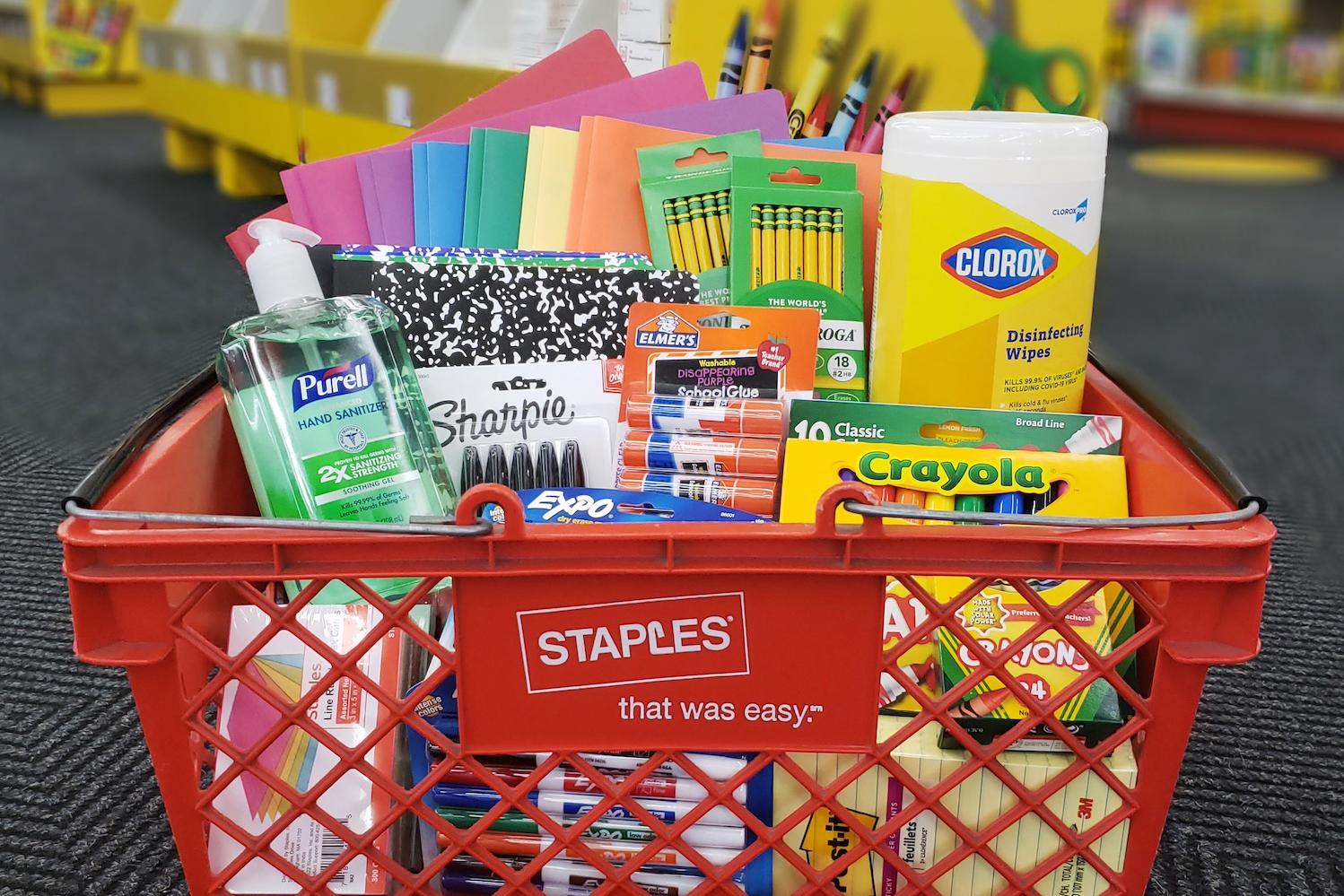
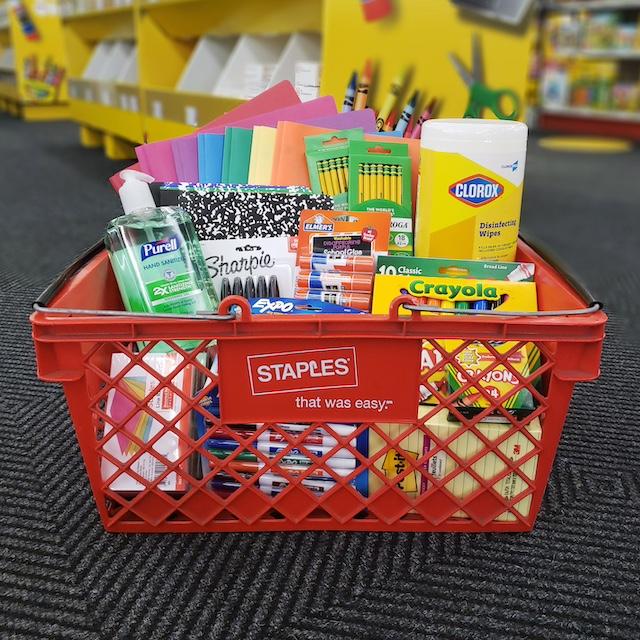
(Image courtesy of Staples.)
New school supplies are expected to run just under $600 per child this year. But what happens to all of the leftover supplies from the year before? Many end up in landfills, including over half a million pounds of crayons. Staples is making it easier for consumers to keep these often difficult to recycle, mixed material items out of the trash.
“Staples is one of the only retailers in America where you can recycle your backpacks and school supplies for free, creating a convenient and easy way to get rid of old school supplies while also making a significant impact on our environment,” Brian Coupland, senior vice president of merchandising at Staples, told TriplePundit.
Recycling school supplies that can't go in curbside bins
The office supply chain already has an extensive in-store recycling program that accepts a variety of items — from AirTags to webcams — for free. Its expansion into backpacks and school supplies is part of a partnership with Close the Loop, which helps companies implement programs that work towards creating a circular economy. And participating in the program comes with a helpful bonus for those who want to do some back-to-school shopping: They’ll get $10 off purchases of at least $30.
School supplies are accepted in all Staples stores, Coupland said. The items that can be dropped off include an array of supplies that can’t be placed in curbside recycling bins like backpacks, lunch boxes, crayons, regular and colored pencils, pens, markers, binders and more. Glue sticks and glue bottles can be brought in for recycling, but they have to be empty. Tech supplies like calculators, earbuds and USB cables are also accepted. But scissors and other sharp items are not eligible.
Tailoring the process to the item
“First, we consolidate all collected items for recycling at our distribution centers and then send them back to our recycling partners,” Coupland said. “School supplies are sorted, then go through the appropriate recycling process, ensuring all supplies sent in for recycling stay out of landfills — helping to facilitate the circular economy of these items.”
This means some supplies are treated differently than others. For example, backpacks still in good condition are donated to organizations that distribute them to people in need, such as victims of natural disasters and people experiencing homelessness, Coupland said. Crayons, on the other hand, are sent to The Crayon Initiative.
“They take the crayons we collect, melt them down, make new crayons, and then donate them to children’s hospitals across the country,” Coupland said. “It’s great to keep crayons out of landfills. It’s even better to get new crayons in the hands of children who need them.”
Expanding an already successful recycling program
Staples’ original recycling program dates back to 2012. It boasts 8,000 tons of recycled technology, 23 million recycled ink and toner cartridges, and 10,000 tons of recycled paper. So there’s good reason to think the program will also be successful with school supplies.
“As soon as Staples announced backpack and school supplies recycling we had customers coming in with their supplies to recycle,” he said. “The response and feedback of the offering has been overwhelmingly positive, and we can’t wait to see how many backpacks and school supplies we can collect together.”
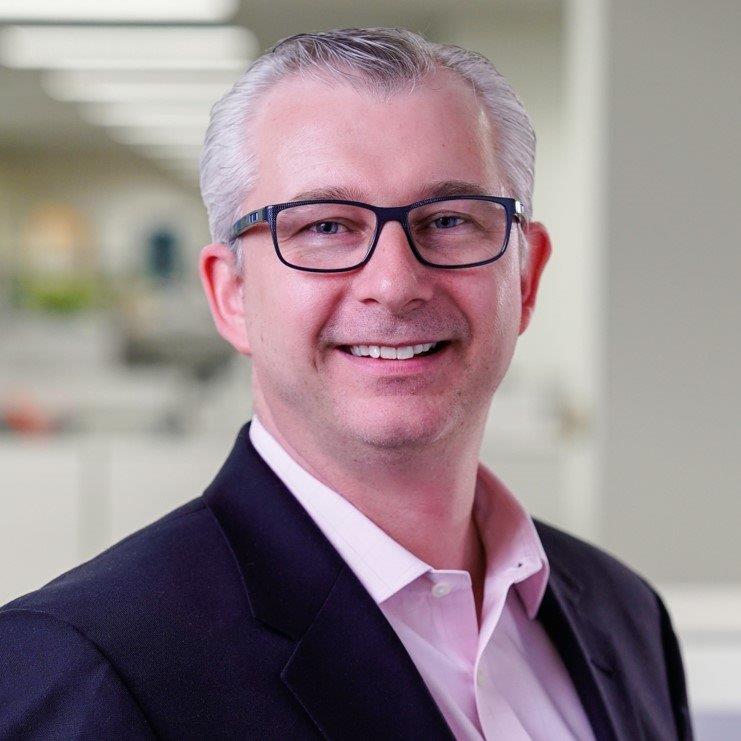
Scaling up depends on partnerships
“It’s important that we give consumers easy and accessible recycling solutions for many hard-to-recycle items to help keep as much waste out of landfill as possible,” Coupland said. This self-imposed extended producer responsibility helps take some of the onus off of the consumer by making recycling simple and offering a financial reward. In doing so, it encourages increased corporate environmental accountability.
While it is feasible for other companies to develop similar in-store recycling programs, scaling them depends on effective partnerships — like Staples and Close the Loop — to create a complete solution that doesn’t burden the consumer, Coupland said.
This model isn’t limited to school supplies, of course. Another retailer harnessing the power of partnerships to offer in-store recycling is PetSmart. The pet supply company is piloting a dog toy takeback program at select locations in collaboration with West Paw.
Reduce, reuse, then recycle
Naturally, not all school supplies need to be replaced every year. While some students might push back against reusing last year’s supplies, doing so presents an excellent opportunity to learn about environmental responsibility. Likewise, for supplies that are too worn out to use again, recycling offers another important lesson.
“This is also a great way to educate our young learners on the importance of responsible recycling in a fun and rewarding way,” Coupland said.
Harnessing the Oceans to Combat Climate Change: The Possible Next Wave in Geoengineering


(Image credit: Spencer Watson/Unsplash)
As global temperatures continue to rise, the search for solutions to mitigate the effects of climate change intensifies. Among the various options, solar radiation modification, also referred to as solar geoengineering, is gaining traction as a potential method to temporarily reduce global temperatures. This technique, which involves reflecting the sun’s energy back into space, is increasingly viewed as a temporary way to cool the Earth until greenhouse gas emissions can be sufficiently reduced by lessening our reliance on fossil fuels.
A considered approach to cooling our planet
Historically, the idea of modifying solar radiation through techniques like injecting aerosols into the stratosphere, cirrus cloud thinning, space-based techniques and stratospheric aerosol scattering was met with skepticism due to the potential for unintended consequences. Accordingly, a less radical method known as marine cloud brightening presents a promising alternative.
This technique uses a machine attached to a boat to disperse sea salt into the air above the ocean surface, increasing the clouds' reflectivity and decreasing the amount of solar radiation they absorb. Originally conceptualized in the 1990s by British physicist John Latham, marine cloud brightening has significantly evolved to incorporate precise control over the dispersion of sea salt using advanced technology.
While marine cloud brightening has been studied in computer models and is beginning to be field tested by the University of Washington and other groups, scale is a corollary challenge that must be addressed. The difficulty lies in how to achieve broad coverage over vast areas without simultaneously consuming large amounts of fuel, which would reduce, if not entirely negate, the intervention’s benefit.
One innovative solution involves the use of autonomous solar-powered catamarans. These vessels will be equipped with expansive solar arrays integrated into their dual-hulled structures, maximizing energy capture for propulsion and operation of aerosol dispersion appliances. This design ensures continuous, emissions-free operation.
Deploying these catamarans near the equator, where sunlight is most intense, could significantly enhance the cooling effect globally. By autonomously navigating predetermined routes, these catamarans can cover vast ocean areas, continuously deploying aerosols without human intervention and providing a significant advancement in the scalability and effectiveness of solar geoengineering efforts.
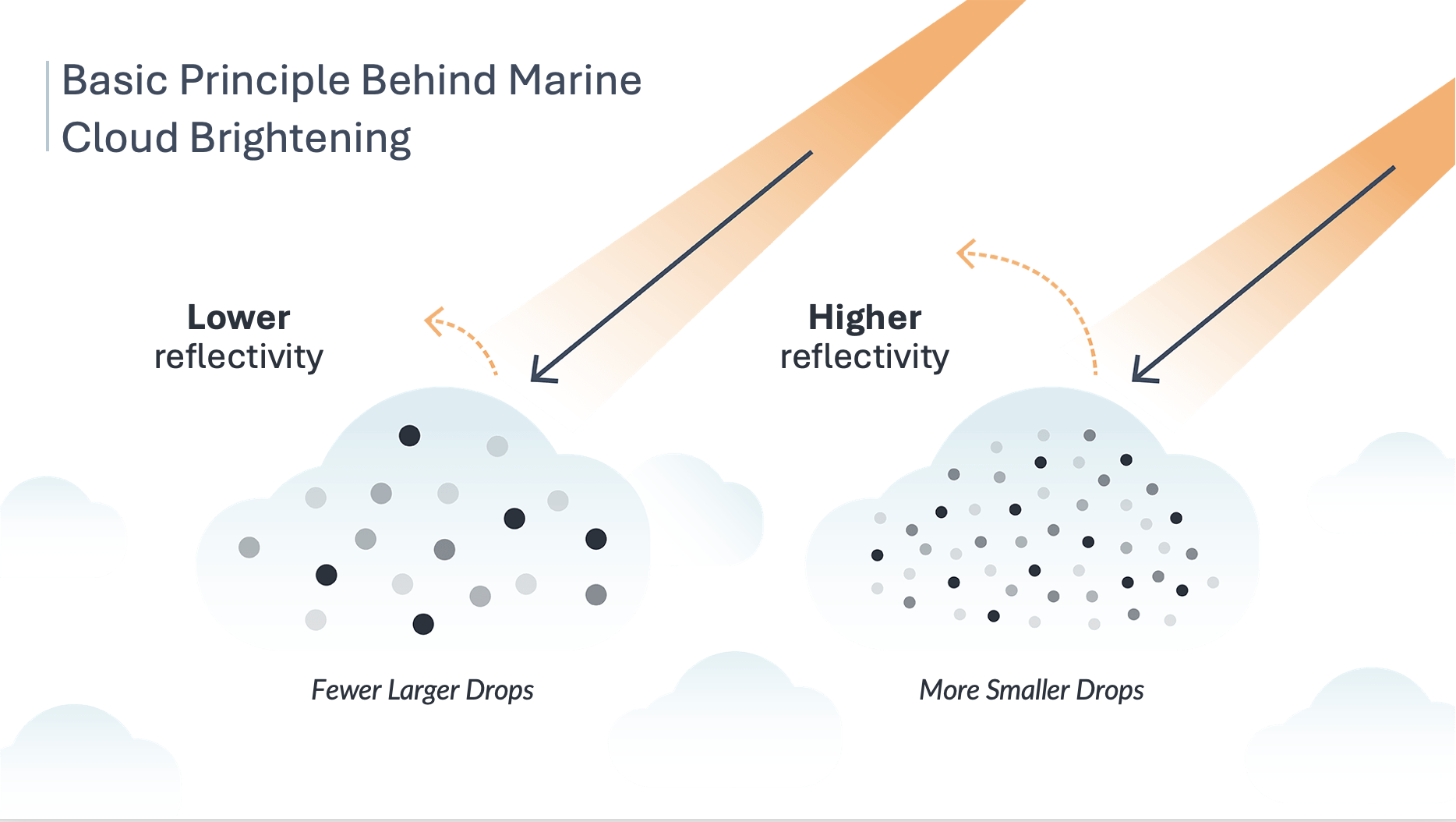
Reevaluating radical solutions: Challenges and limitations
Despite the promising advancements in marine cloud brightening technology, a number of questions remain regarding its long-term impact on weather patterns and marine ecosystems. Ethical questions about the governance of such geoengineering efforts, as well as the long-term climatic consequences, also persist. Moreover, scaling this technology to a level that could meaningfully impact global temperatures presents significant logistical and financial challenges.
Nevertheless, the increasing interest in geoengineering solutions as global temperature levels rise is underscored by a shift in perspective among some prominent environmental groups. The Environmental Defense Fund is among those planning to finance research into solar geoengineering technologies like marine cloud brightening, The New York Times reports.
This is notable because the Environmental Defense Fund has traditionally been skeptical about such interventions. However, as the organization's associate chief scientist Dr. Lisa Dilling told the Times, the urgency of the climate crisis makes it imperative to explore all possible methods, including those that may have been previously dismissed. The Environmental Defense Fund's research aims to answer critical questions about the broader impact of these interventions, such as the effect on precipitation patterns and ocean currents.

The power of collaboration
Inspiration for the autonomous catamarans comes in part from the Energy Observer, a 100-foot catamaran launched in 2017 as the first hydrogen-powered vessel to demonstrate the viability of using renewable energy in maritime applications. Through the integration of solar arrays, the use of seawater to produce hydrogen, and hydrogen fuel cells and advanced navigation systems, the project offers practical insights into building efficient, sustainable catamarans capable of long-term, autonomous, carbon-free operations to enhance marine cloud brightening efforts effectively to combat global warming.
Preliminary estimates suggest these solar-powered catamarans can significantly increase the area covered by marine cloud brightening interventions, potentially amplifying their cooling effect on the planet. These autonomous vessels, guided by advanced navigation systems to calculate the most effective dispersion routes based on real-time climatic data and oceanographic conditions, can operate continuously, minimizing human labor and operational costs. Their ability to be directed toward areas with the highest sunlight exposure will maximize energy generation for propulsion and aerosol dispersion, and optimize the intervention’s effectiveness.
While they aid in cooling the oceans and reducing the heat absorbed at the surface, the catamarans will also gather critical data that can help inform more robust climate models and future geoengineering initiatives. This dual functionality — and the ability to target the intervention in specific regions such as along the equator, where natural ocean currents can distribute the cooling effect — underscores the potential of integrating this technological innovation with environmental conservation and decarbonization strategies to address the complex challenges posed by global warming.
Engaging the world in climate action
This initiative is a call to action for global cooperation by academic, for-profit and nonprofit groups in supporting innovative climate change solutions. As these autonomous solar-powered catamarans navigate the oceans, they could embody hope for a cooler, more sustainable future.
Further research and development are necessary to refine marine cloud brightening and the autonomous catamaran technology to deploy it. Pilot projects are crucial for testing and validating real-world effectiveness and environmental impact. Such endeavors will provide the foundational knowledge needed for broader implementation, potentially revolutionizing our approach to mitigating global warming.
(Homepage image: Shifaaz shamoon/Unsplash)
A Coalition of Companies is Replacing Thin-Film Plastic With Seaweed
(Image: Longlong Han for Notpla)
A coalition of top brands, innovators, investors and organizations is promoting alternatives to harmful thin-film plastics, a major source of pollution leeching into the world’s oceans.
The initiative stems from the Tom Ford Plastic Innovation Accelerator, named after the fashion designer Tom Ford and powered by the plastic waste reduction nonprofit Lonely Whale.
“Nearly half of all new plastic waste entering the ocean each year comes from one ubiquitous source: thin-film plastic made from fossil fuels,” Emy Kane, managing director at Lonely Whale, told TriplePundit. “These flexible films are not readily degradable and are difficult to recycle. They can often end up in the ocean, where they can be ingested by sea life and generate microplastics as they fragment.”
The accelerator is phase two of Unwrap the Future, a three-phase, multi-year program to vet and scale biologically degradable alternatives to traditional thin-film plastic. The year-long accelerator aimed to raise awareness of the negative impact of traditional thin-film plastic and advance the adoption of seaweed-based alternatives. A key component of the program is the coalition of 19 early adopter brands, Kane said. They were curated and convened by Lonely Whale for their commitment to attempting pilots and trials of the thin-film alternatives.
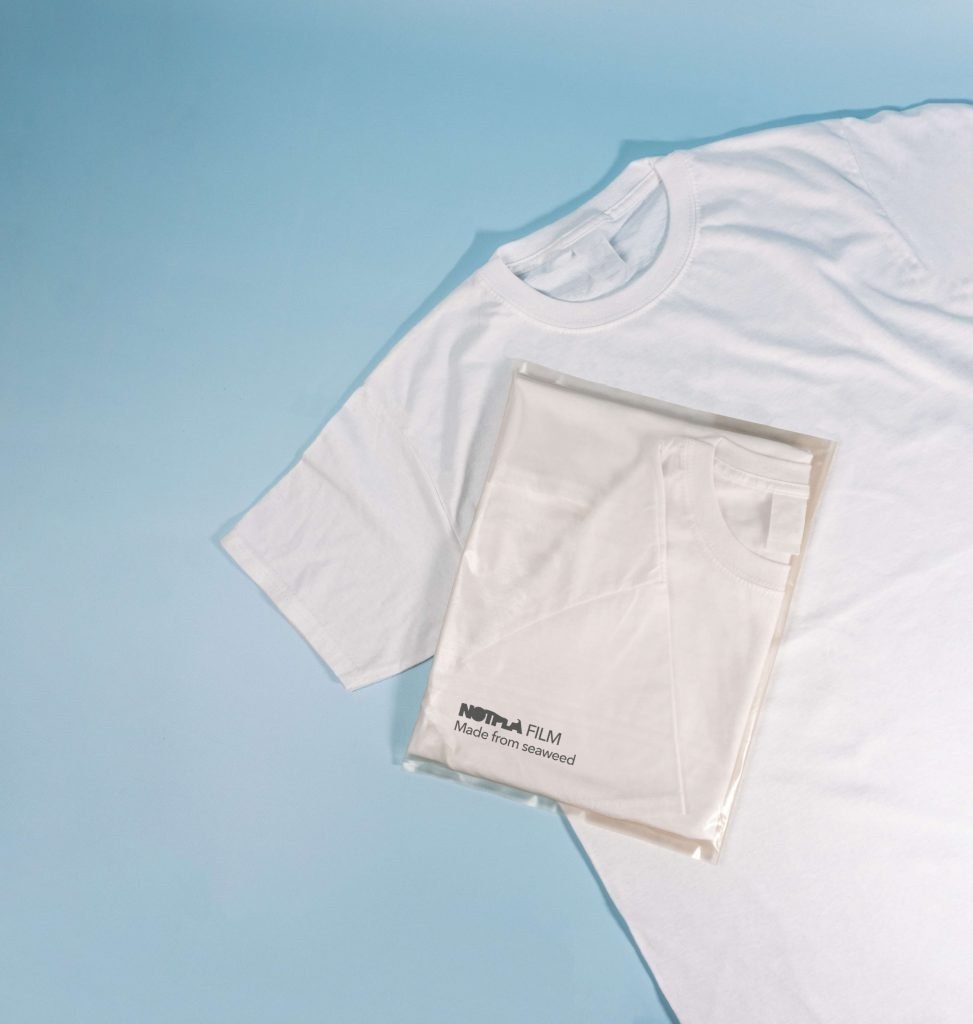
The seaweed-based films were selected in phase one of the program: a global competition called the Tom Ford Plastic Innovation Prize powered by Lonely Whale. The winners were America-based Sway, India-based Zerocircle and London-based Notpla.
“Innovation prizes have incentivized large-scale problem-solving for over 300 years so it was a natural choice for this to be our method of finding a solution,” Kane said.
More than half of the early adopter brands have launched a trial with one or more winners, providing crucial insights to help scale the new materials and drive demand, she said.
The home furnishings company MillerKnoll is performing performance tests on Sway’s materials to assess their suitability for various applications. The snowboard and gear company Burton is evaluating materials from Sway and Zerocircle under different temperature and humidity conditions typical in supply chains, aiming to replace plastic shrink film and kraft paper sleeves. And the designer clothing label Stella McCartney is trialing Notpla’s film with its Italian poly bag supplier in hopes of replacing its existing poly bag materials.
Some companies are already using the new packaging. The running and cycling store Le Club overcame past challenges with thin-film alternatives by adopting Sway’s seaweed packaging. The sports equipment brand Florence and the men’s clothing brand Noah both used Sway’s packaging for limited-edition product launches.
One of the biggest challenges against the large-scale adoption of plastic alternatives is that supply chains are highly optimized around the processes and materials already in use, Kane told 3p. Introducing new variables, such as alternative materials, creates new problems to solve. Cost is also a consideration.
“Fossil fuel-based plastics have been engineered over many decades as low-cost and high-performance materials,” Kane said. “However, these costs do not include the numerous negative externalities generated by the production and use of fossil-fuel-based plastics, most notably impacts on climate and human health. Startups providing alternatives must navigate this cost dynamic while also optimizing and refining their materials.”
Time is also a major challenge for biomaterial innovators, she said.
“From longer lead times to the capital expenditures required for product development and corporate investment required to reach scale, adoption of alternatives to traditional plastics can often take multiple years to see through,” Kane said.
Though the project has concluded, the work continues, Kane added. Lonely Whale will maintain its support for the early adopter brands and phase one winners to ensure continued success.
The nonprofit’s digital community expressed excitement at every milestone of this program. That’s an indication of an appetite for innovation “that doesn’t just inspire, but that also helps to shift the market,” Kane said. “Whether in conversation, convening or through content, when we showcase the prize winners' materials the resounding response is, ‘When will I be able to buy something wrapped in a seaweed-derived plastic alternative?’”
Consumers have an immense role to play in driving the adoption of these materials, she said.
“When brands know what their consumers want, they are encouraged to source solutions,” Kane said. “Even though consumers might not be able to opt-in to receive a product packaged in seaweed-derived packaging right now, they can make their interest heard.”
This Program Helps B Corps Dismantle Racism
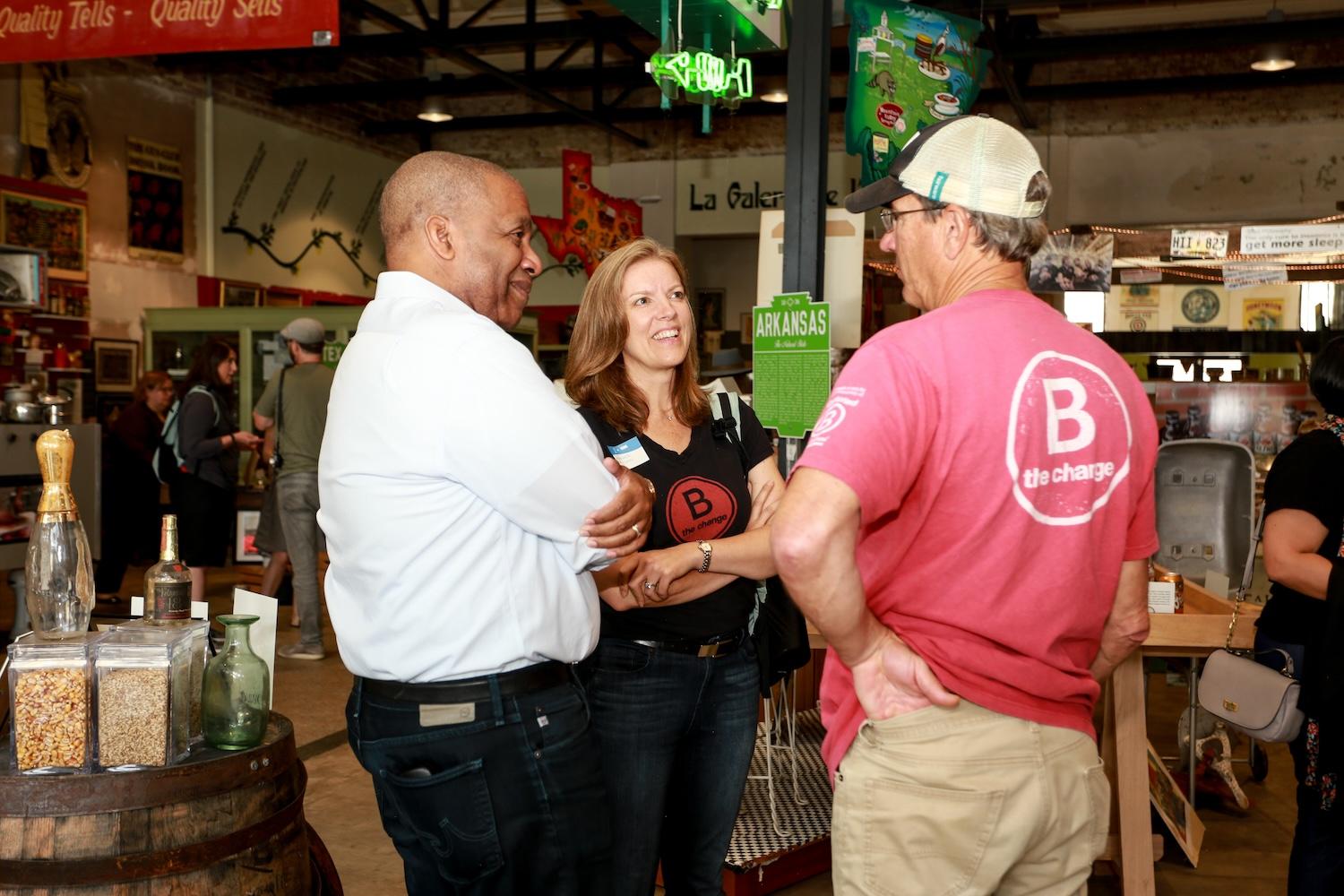
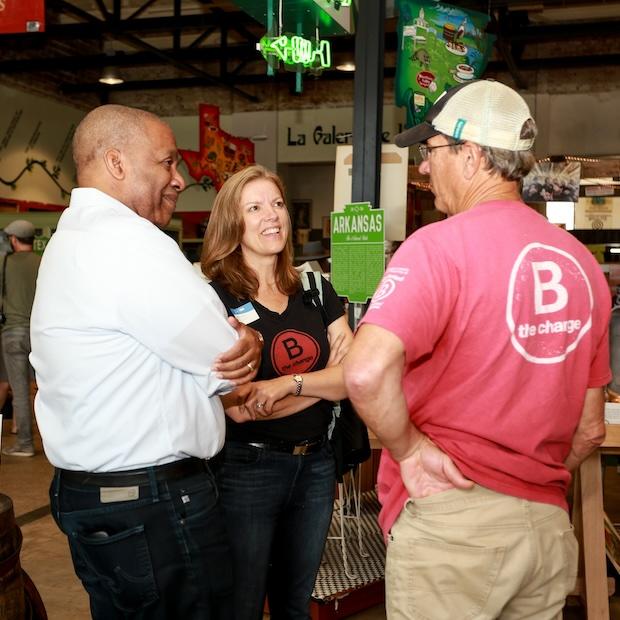
B Corp leaders at a recent Champions Retreat, an annual event that convenes B Corps and other values-aligned organizations and businesses in the U.S. and Canada. (Image courtesy of B Lab in the U.S. and Canada)
After George Floyd was murdered by a Minneapolis police officer in May 2020, U.S. companies large and small pledged to take an inward look to better understand how their business models perpetuate racism and harm communities of color. Banks vowed to change their lending practices, while retail businesses promised to stock more Black-owned brands and companies of all sectors committed to diversify their C-suites and boards.
Some backed off their claims as "woke" became a dirty word, but others stayed the course, even as the work grew difficult or fell out of the news cycle. Among those who kept at it are the executives who took part in the Racial Equity Impact Improvement Program at B Lab, the nonprofit that certifies businesses as B Corporations.
Launched last year, the program brings corporate executives together on an eight-week learning journey to discuss the ways businesses can dismantle racism. Together with B Lab facilitators and subject matter experts, the company leaders unpacked complicated subjects like wages, hiring, and ensuring diversity at the department level, in the C-suite and on boards. Many went on to fundamentally change their businesses as soon as the cohort wrapped, with one switching her business to be 100 percent employee-owned and another improving fair chance hiring policies for people with criminal justice involvement.
"We're living in a very polarized moment right now in our country unfortunately," said Hugues Sygney Jr., senior program manager on the racial equity team at B Lab in the U.S. and Canada. "You have a lot of folks who are, quite frankly, scared of things like litigation and having these courageous conversations around topics that post-George Floyd were some of the most important topics being discussed. All of a sudden, now it's going in the opposite direction. Hence why we are not imposing this on anyone. This is a journey. You have to be called to it."
As the program completes its second year, we sat down with Sygney to find out what companies learned, how they're putting it into practice, and what's next for the program as it looks to scale.
What is the Racial Equity Impact Improvement Program, and why do B Corps need it?
Most B Corp businesses have a social or environmental bent to begin with. They must pass rigorous social and environmental assessments to be certified, and out of the more than 330 million companies globally, only around 8,000 can call themselves B Corps.
But as sustainability darlings like Patagonia and REI called out in their 2020 reflections, everyone has room for improvement. All of us with decision-making power in the U.S. have fallen short in using that power to bring about true equality for all people, even the "good" executives and the "good" brands. If we hadn't, the U.S. wouldn't find itself in the situation where people of color have less wealth on average compared to white people, their businesses and nonprofits receive less funding, and they're less likely to be promoted at work.
Launched in April 2023, the Racial Equity Impact Improvement Program looks to educate leaders about these disparities, their historical context and how B Corps can leverage their businesses to dismantle discriminatory systems piece by piece. Partners including Honest Jobs, Just Capital and Beyond Inclusion Group lead discussions on topics like paying a living wage, establishing fair chance hiring programs and creating benefits that allow employees to build wealth.
"Racism is explained in a way that provides context to businesses and how certain businesses still perpetuate these policies that continue to widen the wealth gap [and] continue to marginalize those who are not given the support and resources needed in order for them to thrive," Sygney said. "We leveraged our CEO Blueprint for Racial Equity, which was designed in partnership with the Corporate Racial Equity Alliance, to provide a tool that would support B Corps in advancing around these areas."
The first cohort paved the way with 12 B Corp companies identified through a detailed process to assess their internal capacity and openness to change. "They really wanted to do the work," Sygney said. "They understood the 'why' of what they're trying to see within their impact in communities."
After the eight-week program, the leaders told B Lab they left with a completely new perspective on how their businesses could do more to counter discrimination for their employees and communities. "From that first iteration, we've seen significant impact and significant interest," Sygney said. "We've had companies immediately shift their business practices because of the program, and that helped us understand that this type of program really adds value."
Understanding racism and racial equity catalyzes big change for B Corps
B Lab's Racial Equity Impact Improvement Program goes beyond discussing general themes and historical context to break down specific corporate policies that can improve equity and correct bias.
The practical approach resonated with B Corps like Community Services Group, a Pennsylvania provider of mental health and disability services that was among the program's first cohort. The company's executives completed an anti-bias program and worked with a diversity, equity and inclusion (DEI) consultant in the past, but they had trouble translating what they learned into actionable next steps. "We struggled to identify operational changes we could make to increase diversity in our workforce and make our work spaces safe for all perspectives," CEO Susan Blue told B Lab. "We applied to the Impact Improvement program because of its focus on action through operational changes.”
Those operational changes could mean a company adjusting its starting wage or bonus structure, changing how it recruits and hires, or creating new benefits that positively impact employees.
"When we say 'anti-racist frameworks,' we're not just saying get a couple of Black, Indigenous and people of color into your board, or take a couple of anti-racist trainings," Sygney said. "What we're saying is it's important to have these courageous conversations internally, have dialogue with your community, identify partners that could be from a different demographic of people you would normally not work with, and challenge leaders to think outside the box in ways that really bridge community."
For Miren Oca, founder of Ocaquatics Swim School in Miami and another member of the first cohort, it meant transitioning ownership of her company to a 100 percent employee-owned trust.
"[The program] explored topics like wealth-building and creating financial wellness benefits that level the playing field for all employees,” she told B Lab. "Employee ownership acknowledges the contributions our team members have made to the success of our business while empowering them to take responsibility for the continued impact and prosperity of our business for good."
Derek Hydon, founder of the sustainable branded products company MaCher, was also struck by what he learned and translated it to action through fair chance hiring.
Not only did the company modify its own practices to delay background checks in the hiring process and limit the information collected, but it also worked with program partner Honest Jobs to educate other companies about fair chance hiring and why it matters. Among the other changes made in the year since completing the program, MaCher employees now mentor students through the Creative Futures Collective, and the company established a scholarship program to help Indigenous students attend design school.
The first cohort of participants were so impacted by their time together that they established an alumni group to stay in contact after the program wrapped, and they advised the second cohort of 14 B Corps as they entered their eight-week journey. “Learning with others in a cohort group is so beneficial, and also creates mutual accountability and support,” Hydon of MaCher told B Lab. “I’m grateful for the ripples the training continues to provide.”
How can impact like this scale?
The tailored nature of the program helped it to have a significant impact on the 26 companies that participated so far, but it also creates clear limitations as B Lab looks to scale.
The nonprofit aims to enlist 30 to 40 B Corps in the next iteration, but it's also looking to bring the program online to open it up to more B Corp leaders in the coming years.
"Within the U.S. and Canada alone, we have over 2,500 B Corps," Sygney said. "To really be able to reach as many B Corps as possible, we have to get into the digitalization of this program. Right now, it's very curated in a very small cohort."
Based on what they've seen from early participants, Sygney and his team are optimistic about the future of the program and the systems change it can inspire as it scales up. "What we've seen thus far is that folks are very interested," he said. "Despite all of that fear, we have seen positive feedback and positive commitment by leaders. We are really grateful for the leaders in the B Corp space who continue to show up and lead in ways that we've been seeing from the inception of the movement."
Low Profile, High Impact: New Life for At-Risk Auto Plants
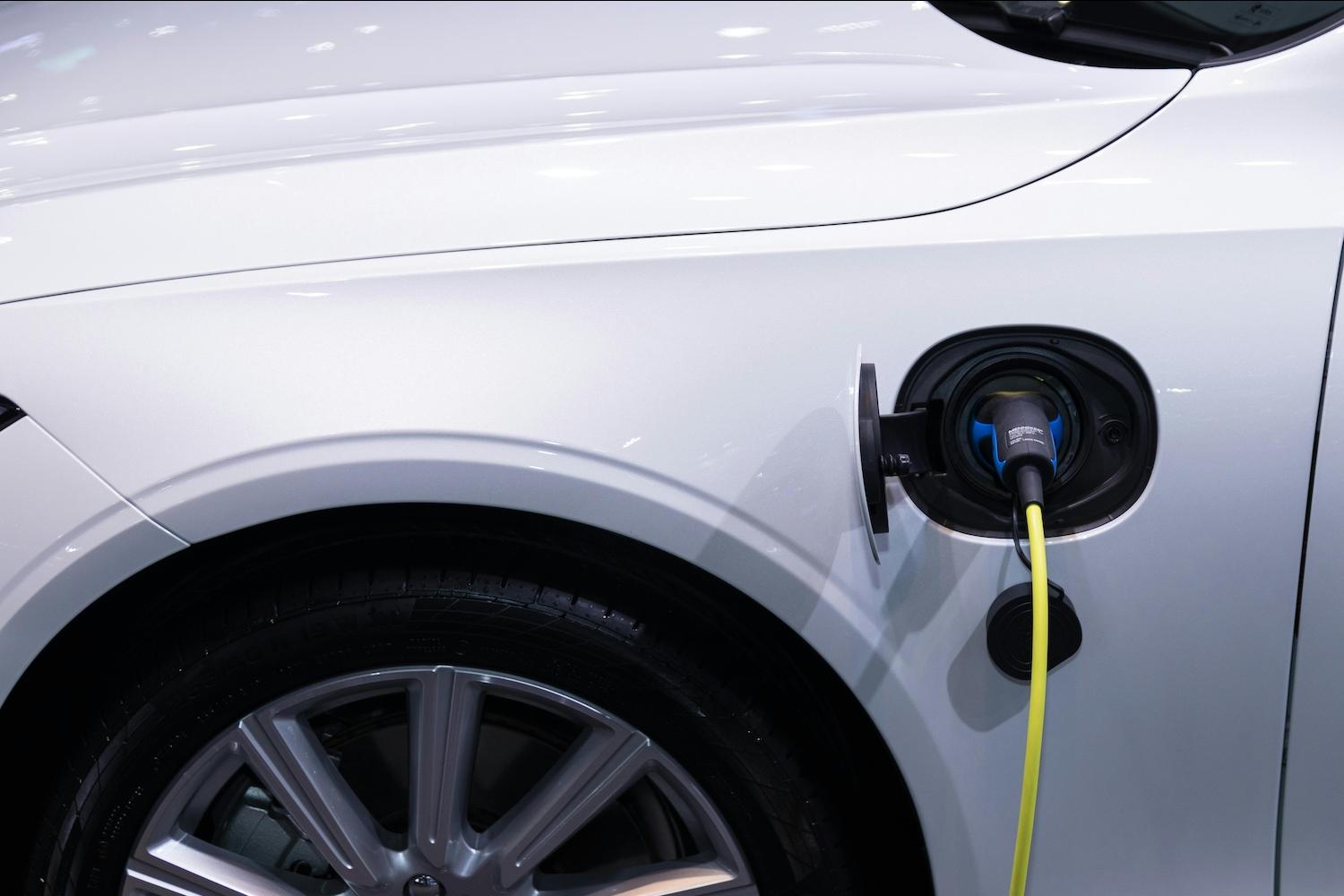
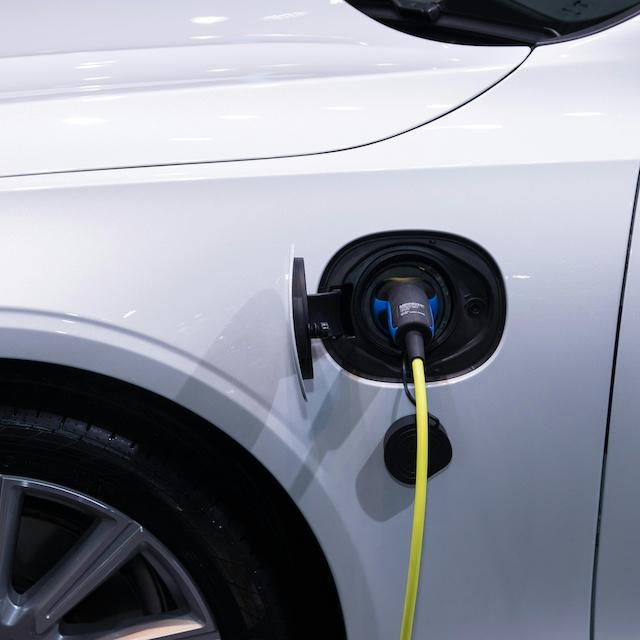
(Image: Rathaphon Nanthapreecha/Pexels)
The partisan political gap on climate action is wider than ever, but the Joe Biden administration is still forging ahead with support for private-sector stakeholders in the zero-emission, electric vehicle (EV) field. In the latest development, the U.S. Department of Energy tapped 11 automotive projects, for a total of $1.7 billion in matching grants, aimed at transforming derelict and aging manufacturing plants into modernized facilities focused on the EV supply chain.
Transforming old factories into new
The grants are administered by the Energy Department’s Office of Manufacturing and Energy Supply Chains through the new Domestic Manufacturing Auto Conversion Grants program. Funded by the 2022 Inflation Reduction Act, the program provides matching funds of up to 50 percent to support the retooling of existing manufacturing facilities and rehire auto workers.
In terms of size, the $1.7 billion in federal assistance pales beside the impact of other Biden administration initiatives aimed at stimulating activity in the EV industry. To date, the administration estimates that the Investing in America agenda accounts for $177 billion in private sector investment in EVs, including EV batteries.
Nevertheless, the grant program reflects a holistic, long-term approach to fostering a healthy U.S. EV manufacturing industry. The final award details are still under negotiation, but the selection of awardees indicates that the Biden administration is casting a wide net. The Energy Department lists parts for electric motorcycles and school buses, hybrid powertrains, heavy-duty commercial truck batteries, and electric SUVs among the nine awardees.
Signs of life for EV sales, too
The new grant program also presents a counterpoint to concerns over a slowdown in electric vehicle sales growth. Those concerns sparked last fall when General Motors and Ford indicated that EV sales were not rising as quickly as anticipated.
Though concerns over the pace of growth remain, the statistics do not show a decline in EV sales among U.S. automakers overall. Electric and hybrid-electric sales have actually increased and hit a new record in 2024, with the notable exception of Tesla, according to Cox Automotive. Tesla continues to struggle with declining sales, and some analysts surmise that GM, Ford, and other manufacturers are benefitting from new EV buyers who are turned off by the political inclinations of Tesla CEO Elon Musk.
Regardless of the current pace of growth in the EV market, GM is among the automakers still committed to vehicle electrification. The company won a matching grant of $500 million from the new supply chain program to convert its aging Lansing Grand River Assembly Plant in Michigan. GM already anticipates that the retooled facility will be eligible for future EV support programs.
The company also notes that it made significant investments in the domestic battery supply chain, with the aim of “accelerating commercialization of advanced, affordable EVs.” That outlook represents a sea change from GM’s 1990’s reputation as the owner of the oversized, gas-guzzling Hummer brand.
Another iconic U.S. firm with deep roots in the 20th century is Harley-Davidson. The motorcycle company is also switching gears with support from the new grant program. Harley plans to deploy a matching grant of $89 million to expand an existing facility in Pennsylvania for electric motorcycles in partnership with its LiveWire affiliate. The conversion will involve re-training the company’s union workforce of more than 1,300 employees and hiring an additional 125 workers.
“With this grant, Harley-Davidson can invest in the existing York facility to accelerate placed-in-service dates, utilize and expand its experienced workforce and guarantee supply chain continuity — all of which expedites the U.S. transition toward EVs by creating more affordable, faster-charging EV options for customers,” according to the Office of Manufacturing and Energy Supply Chains.
Behind the supply chain scenes in the EV transition
The list of supply chain grant awardees also includes the familiar names of Volvo and Fiat-Chrysler. It demonstrates that the EV supply chain is growing long, deep roots that will be difficult, if not impossible, to untangle.
The Hyundai Mobis subsidiary American Auto Parts, for example, received a grant of $65 million to convert an existing plant in Ohio for manufacturing plug-in hybrid electric vehicle chassis, aimed at the manufacture of a light-duty truck. Part of the grant will also go to construct a new battery plant in Ohio for plug-in hybrid SUVs, light trucks and minivans.
Two other behind-the-scenes global automotive stakeholders, Cummins and ZF North America, are receiving grants to transform factories in Indiana and Maryland to produce EV components.
In addition to support from the Biden administration for decarbonizing street-legal vehicles, the electrification trend is gaining momentum in off-road industries, including port and logistics facilities, construction equipment and agriculture.
If elections have consequences — and they do — then U.S. investors, executives and workers who earned the benefits of climate action policies promoted by the Biden administration will have a clear choice on Election Day. Whether they continue to benefit in the future remains to be seen.